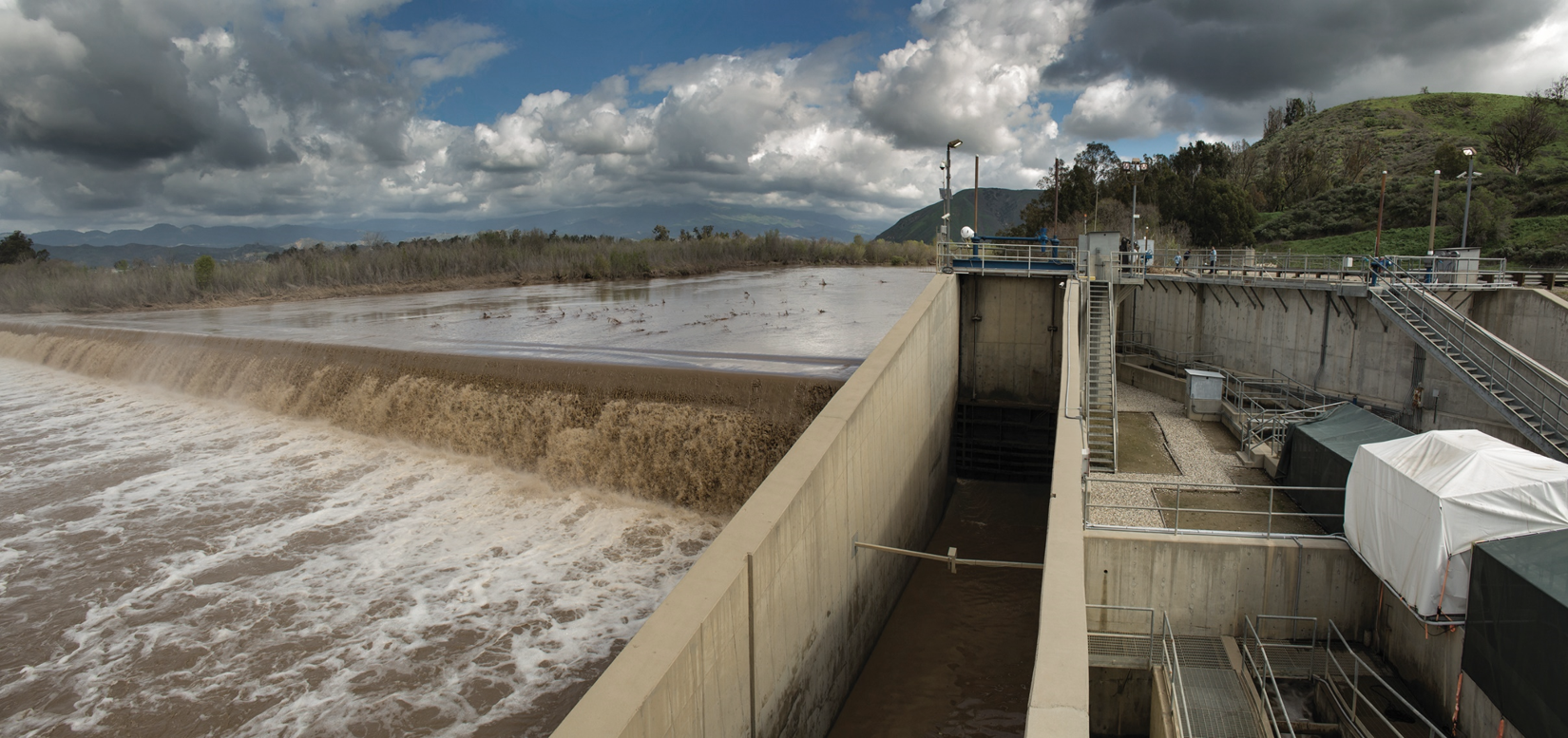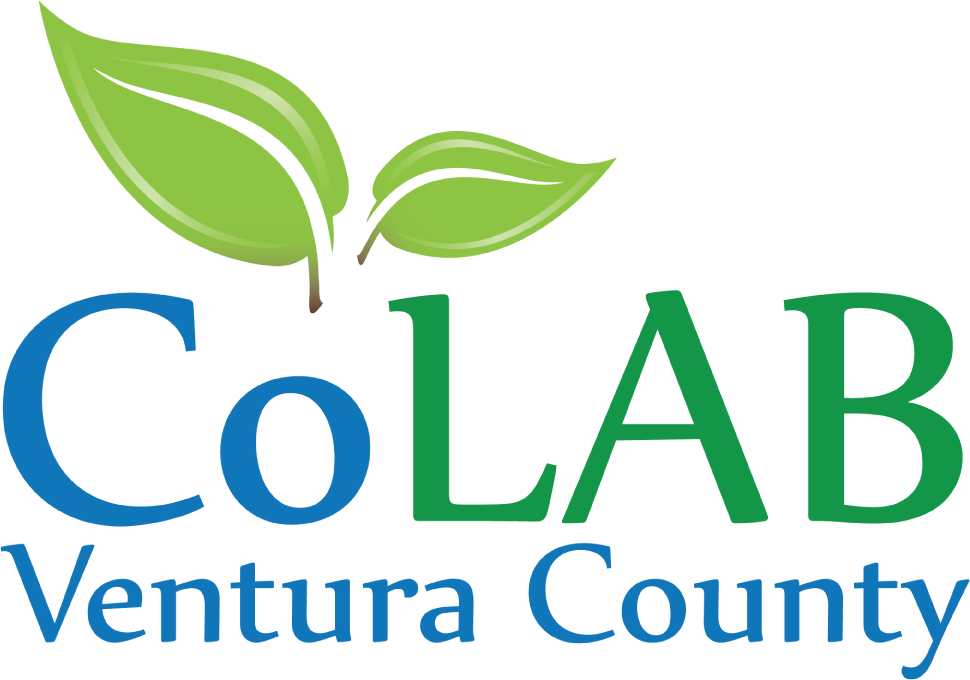CoLAB-organized meeting with water users, NOAA sees results

VC CoLAB organized a highly anticipated meeting on August 8 between local water users, businesses, organized labor and managers from the National Oceanic and Atmospheric Administration (NOAA). The meeting produced a valuable discussion over balancing competing needs for water from the Santa Clara River including water supply for cities, farms and other businesses, and protection of the endangered Southern California steelhead. The discussion was a positive first step toward solving a decade-long dispute about how to handle fish passage through a vital piece of Ventura County’s water infrastructure.
CoLAB organized the meeting due to concerns from local water users over a long-running dispute between the federal government and United Water Conservation District (UWCD) over the operation of the Freeman Diversion on the Santa Clara River. In attendance were representatives from agriculture, including local farmers as well as the Farm Bureau, the Oxnard and Camarillo Chambers of Commerce, and a representative of the trade labor organizations.
These representatives of local water users met with regional NOAA leadership: Barry Thom, Regional Administrator for NOAA Fisheries West Coast Region and Lisa Van Atta, Assistant Regional Administrator in charge of the California Central Coast region. The dialogue between the water users and NOAA officials focused mainly on the progress (or lack thereof) toward a solution for the Freeman Diversion issue.
Since 2008, UWCD has been negotiating with the federal National Marine Fisheries Service (NMFS), a division of NOAA, regarding the Freeman Diversion facilities and operations in order to accommodate improved passage of endangered steelhead trout in the Santa Clara River. Since then, UWCD has been forced to operate without a permit for its diversion operations, as well as greatly reduce the amount of water diverted to a fraction of its historical yearly diversions.
These reductions in diversions from the Santa Clara River threaten the long-term sustainability of Ventura County’s groundwater supply. Already, agencies implementing the Sustainable Groundwater Management Act (SGMA) in the Oxnard Plain estimate that roughly a third of agricultural land will have to be fallowed without additional water supply projects. If the current restrictions on UWCD continue, that number will dramatically increase since the Freeman Diversion is the primary source of groundwater recharge in the Oxnard Plain.
The Freeman Diversion facility is a critical component of Ventura County’s regional groundwater supply infrastructure. Since its construction in 1991, it has diverted an average of 60,000 acre-feet a year for groundwater recharge, replenishing the aquifers beneath the Oxnard Plain and slowing seawater intrusion beneath 50,000 acres of productive prime agricultural lands.
The water that UWCD diverts to recharge groundwater also benefits municipal users in the cities of Oxnard, Camarillo and Ventura, which have wells that draw on those aquifers. Over 377,000 people depend daily on the groundwater aquifers that UWCD recharges through the Freeman Diversion.
It is estimated that a 10,000 acre feet reduction in water diverted from the Santa Clara River would result in $91.1 million annual loss for the local economy from reduced crop production. Property values for farmland would subsequently decline, adding a further hit to the budgets of local governments.
In addition, reduced groundwater supply will mean more cutbacks and higher water costs for ordinary water users. In the cities of Oxnard, Ventura and Port Hueneme, 20% of residents already have unaffordable water bills. Choking off the supply from the Freeman Diversion will only exacerbate this affordability crisis.
Local water supply also influences development decisions, and insufficient water resources can prevent the construction of critical affordable housing for low-income residents. Lack of water can also prevent commercial or industrial projects from being constructed, projects that our local workforce relies on for high-paying jobs.
The consequences of not finding a reliable, long-term solution for fish passage in the Santa Clara River are thus potentially quite severe for local farmers, businesses, workers and residents. Many of the water users at the August 8 meeting focused on the need to find a solution in a reasonable amount of time, rather than let the current restrictions drag out for years and threaten the availability of groundwater supplies.
Participants at the meeting also stressed the need for a science-based approach to finding a solution. The Santa Clara River is different from other steelhead trout habitat, being a flash prone river that brings sudden, heavy and turbulent flows rather than the steady, clearer flows preferred by steelhead to migrate upriver. Unfortunately, little scientific research has been done in the Santa Clara River to determine how trout use the river and navigate the Freeman Diversion. The current restrictions on UWCD’s operations are based on studies done on other rivers which behave very differently from the Santa Clara.
The water users also pressed Thom and Van Atta to take a more direct and proactive role in working with UWCD on a solution. Indeed, NOAA has appeared to take steps in that direction already, holding a series of workshops with UWCD that were supervised by Van Atta. Participants also expressed their support for providing NOAA with additional resources and personnel to more quickly process permits and paperwork required to develop a long-term plan for the Santa Clara River.
UWCD is currently in the process of assembling a Habitat Conservation Plan, which is the next step in bringing operations at the Freeman Diversion into compliance. Once that plan is accepted by NOAA, it will go into the Federal Register for a public comment period before NOAA makes a final determination on the solution.
The long-term solution could possibly entail changes to how UWCD diverts water from the Santa Clara, such as taking more water during peak-flow times, and reengineering the fish ladder at the diversion. The goal will be to make these changes without significantly reducing the long-term average amount of water diverted from the Santa Clara River. The solution must also be at a reasonable cost for United and their ratepayers.
While the meeting between local water users and NOAA was a good first step in bringing all sides to the table, CoLAB is planning to continue to engage stakeholders and elected officials in the process and to build public awareness of the issues with fish passage on the Santa Clara River Without the Freeman Diversion on the Santa Clara River, agriculture in Ventura County faces a grim future. Significant progress has been made in moving toward a reliable, long-term solution, with all parties working together for a reasonable solution.

